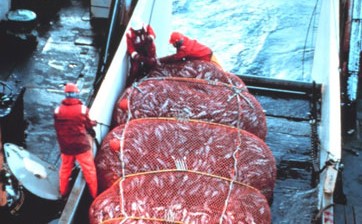Balancing Economics and Environmental Sustainability after Pollock Trawling Bycatch Incident
 The recent bycatch incident involving the Alaskan pollock trawl fishery has cast a spotlight on the challenges of balancing economic survival for fishermen and coastal communities with environmental sustainability. Following a significant bycatch of Chinook salmon, the pollock fishing season was closed early, leading to economic hardships that have prompted debate across the fishing industry, conservation groups, and policymakers.
The recent bycatch incident involving the Alaskan pollock trawl fishery has cast a spotlight on the challenges of balancing economic survival for fishermen and coastal communities with environmental sustainability. Following a significant bycatch of Chinook salmon, the pollock fishing season was closed early, leading to economic hardships that have prompted debate across the fishing industry, conservation groups, and policymakers.
The Alaska pollock fishery is one of the largest and most closely monitored in the world, providing about half of the whitefish consumed in the United States and a critical source of income for Alaskan communities. However, the recent bycatch incident involved the unintended capture of more than 20,000 Chinook salmon, which caused regulatory caps on bycatch and the early closure of the pollock season.
Sustainability is at the forefront of fishery management, and preventing bycatch is essential to preserving salmon populations and maintaining the ecosystem. Fisheries science has increasingly focused on minimizing bycatch through better technology and regulatory oversight. However, as this incident shows, the consequences of this closure have a ripple effect on the economics of the fishing industry.
The pollock industry is a significant employer, and for many local fishermen, it’s their primary livelihood. With the season closed prematurely, hundreds of fishermen, processing plant workers, and support businesses are left without income. Alaska will also miss out on much needed tax revenue. This situation exposes the tension in the fishing industry: the need for economic security often clashes with the need for environmental stewardship.
At a recent Kodiak City Council work session, Chelsae Radell, Assistant Director of the Alaska Groundfish Data Bank, presented findings from an informal study overseen by fisheries economist Garrett Evridge. Here are a few highlights from that study:
- Approximately 100 million pounds of pollock quota was left unharvested as a result of the closure. At an average price of 9 cents a pound, which amounts to a loss of $9 million in ex-vessel revenue.
- Rough estimates project a loss of a half-million dollars combined in local municipal raw fish and sales tax, and the State of Alaska fishery business landing tax.
- Kodiak processors will lose an estimated $50 million to $60 million in product wholesale revenue, based on projected demand and product mix.
- Approximately 900 processing plant workers are impacted by the closure. At least 100 were laid off immediately following the closure, Evridge reported.
A Kodiak native and former commercial fisherman, Garrett Evridge said the closure hits Kodiak’s economy hard.
“This is a big deal, it helps nobody in the short term or the long term,” he said. “These fisheries are interconnected. When we have less revenue from one, it goes into the next season and impacts the other fisheries, too.”
The recent pollock trawling bycatch incident serves as a crucial reminder of the delicate balance required to sustain our oceans and the communities that rely on them. Starting in 2025, the pollock fishery will implement full, comprehensive electronic monitoring (EM) coverage for every trip, both at sea and at shoreside processing plants. This change from monitoring one in three trips to 100% electronic coverage offers more accurate information.
Fishermen, scientists, and policymakers must work together to create a system that provides both environmental protection and economic stability. Cooperative research, where fishermen are actively involved in the development of new tools and practices, could yield insights that benefit everyone. Effective fisheries management must address the complex needs of both sustainability and economics, acknowledging that healthy ecosystems and healthy economies are not mutually exclusive, but reliant on each other.
 Maritime Injury Law Blog
Maritime Injury Law Blog

